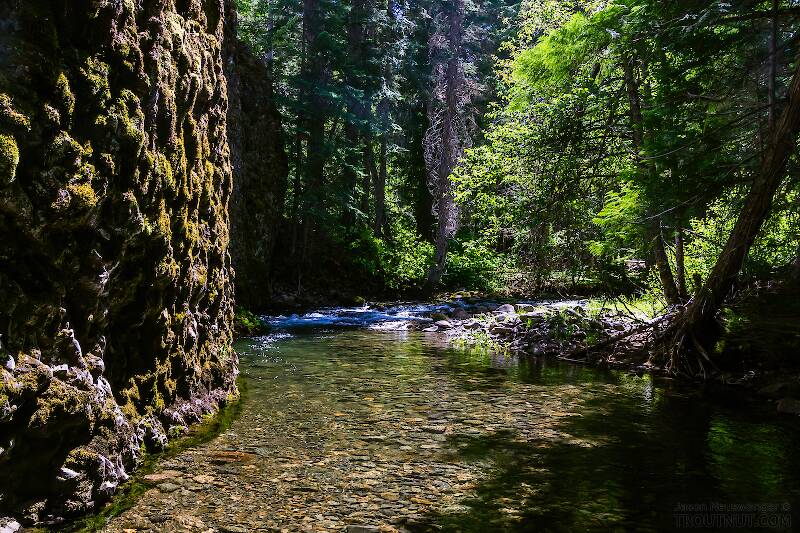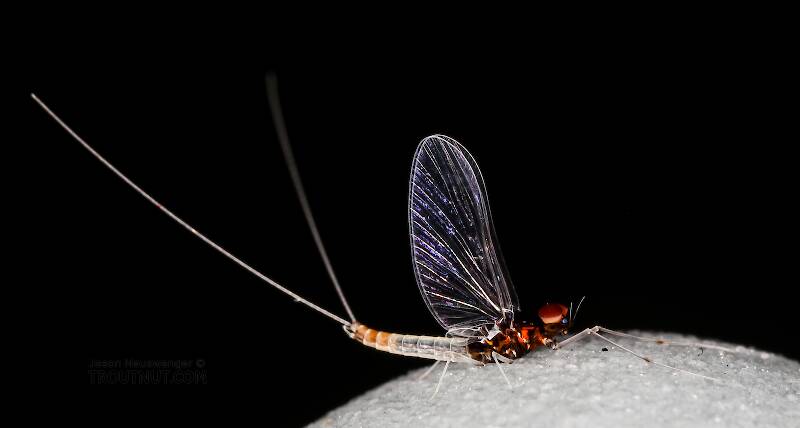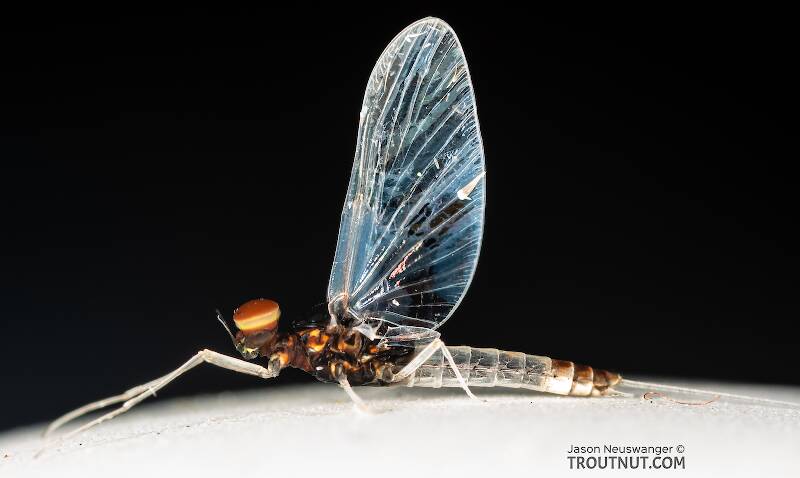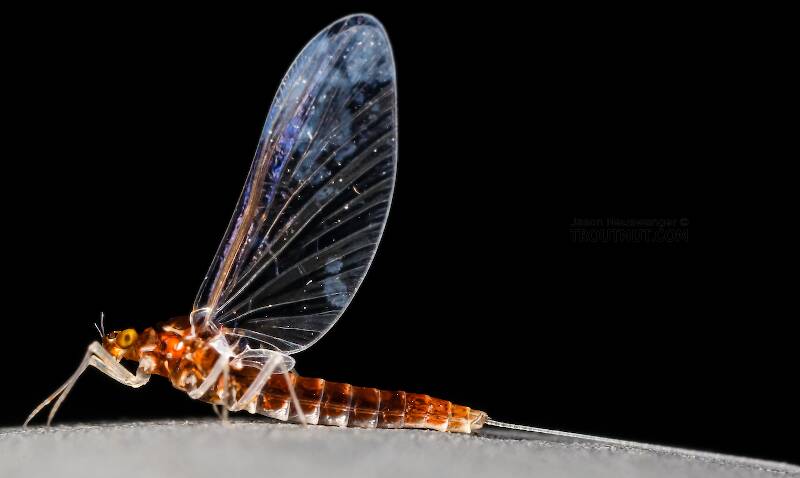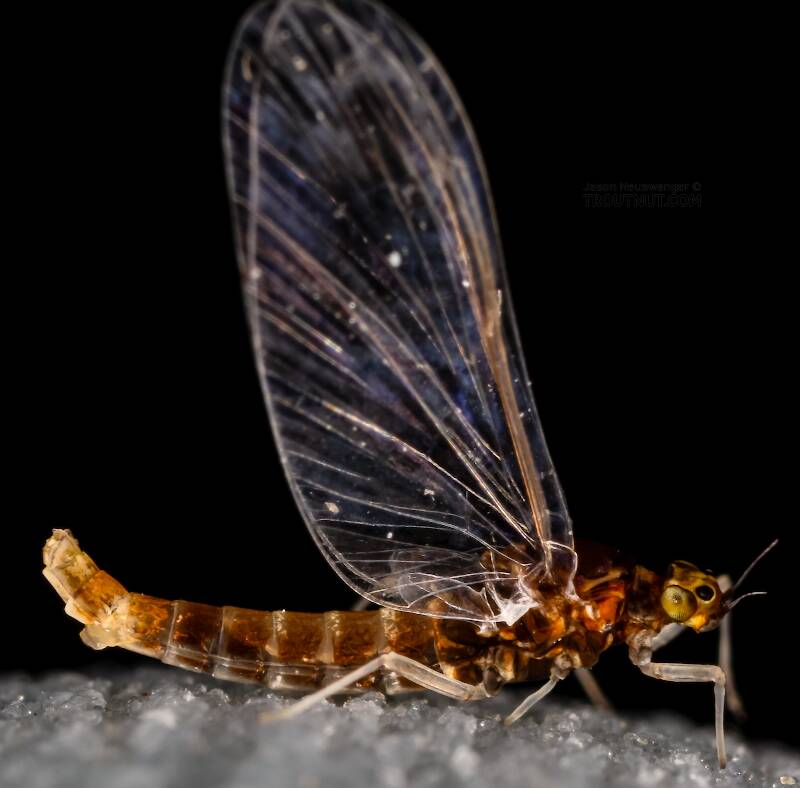
Salmonflies
Pteronarcys californica
The giant Salmonflies of the Western mountains are legendary for their proclivity to elicit consistent dry-fly action and ferocious strikes.


Mayfly Species Acerpenna pygmaea (Tiny Blue-Winged Olives)
It is a diminutive baetid with distribution across every region. It is reported to have localized hatches of occasional importance.
Where & when
Time of year : Early August through mid-September
In 34 records from GBIF, adults of this species have been collected during July (38%), June (29%), May (15%), September (6%), April (6%), and August (6%).
In 25 records from GBIF, this species has been collected at elevations ranging from 3 to 4692 ft, with an average (median) of 2986 ft.
Species Range
Nymph biology
Current speed: Slow
Substrate: Vegetation
Physical description
Most physical descriptions on Troutnut are direct or slightly edited quotes from the original scientific sources describing or updating the species, although there may be errors in copying them to this website. Such descriptions aren't always definitive, because species often turn out to be more variable than the original describers observed. In some cases, only a single specimen was described! However, they are useful starting points.
Male Spinner
Wing length: 2.5-3 mm
Abdominal tergites 2-6 of male imago hyaline whitish; genitalia of the Baetis intercalaris type; hind wing with two veins only (see fig. 163).
Turbinate eyes moderately large, oval; deep brown; upper part of stalk yellow, basal part blackish. Face black; light green shading at base of antenna only. Antenna black, a white ring at the apex of the first joint. Thorax shiny black; faint pale markings along the pleural sutures. Legs white; fore femur slightly smoky. No granulations between the cross veins of the stigmatic area of the fore wing; no intercalaries in first interspace. Hind wing with two veins only, the third entirely wanting.
Abdominal segments 2-6 hyaline whitish; tergites 7-10 light sepia brown ; sternites opaque white. Black dots over the spiracles. Tails white. A tubercle on inner apical margin of the first forceps joint is well developed.
Described as B. harti
Body length 2.5 mm, wing length 3 mm
Abdominal tergites 2-6 of male imago hyaline whitish; genitalia of the Baetis intercalaris type; only two veins present in hind wing, the costal projection very prominent.
Turbinate eyes large for size of insect, oval, blackish brown. Head blackish. Thorax deep black-brown. Legs pale yellowish. Wings hyaline (venation pale?). Intercalaries of the fore wing short but distinct; the first pair obsolescent. Hind wing narrow and long, with a prominent costal projection, much as in B. quilleri (now a synonym of Fallceon quilleri). Only two veins, the third entirely lacking.
Abdominal segments 2-6 hyaline whitish; segments 7-10 chocolate brown dorsally, the sternites slightly paler. Black dots along the spiracular area. Tails whitish. Genitalia of the intercalaris type.
This very diminutive species is distinguishable from B. pygmaeus (now a synonym of Acerpenna pygmaea) by reason of the prominent costal projection of the hind wing; from B. akataleptos (now a synonym of Acerpenna akataleptos), which has a similarly prominent costal projection, it is separable by the pale basal abdominal segments, which in akataleptos are dull brown.
Specimens of the Mayfly Species Acerpenna pygmaea
2 Male Spinners
2 Female Spinners
1 Nymph
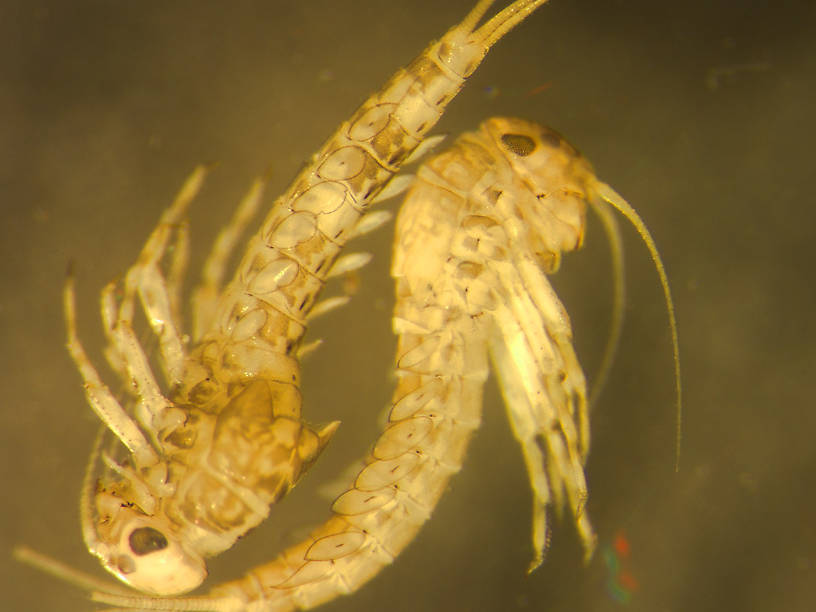
Start a Discussion of Acerpenna pygmaea
References
- Arbona, Fred Jr. 1989. Mayflies, the Angler, and the Trout. Nick Lyons Books.
- Jacobus, L. M., Wiersema, N.A., and Webb, J.M. 2014. Identification of Far Northern and Western North American Mayfly Larvae (Insecta: Ephemeroptera), North of Mexico; Version 2. Joint Aquatic Science meeting, Portland, OR. Unpublished workshop manual. 1-176.
- Knopp, Malcolm and Robert Cormier. 1997. Mayflies: An Angler's Study of Trout Water Ephemeroptera . The Lyons Press.
- Leonard, Justin W. and Fannie A. Leonard. 1962. Mayflies of Michigan Trout Streams. Cranbrook Institute of Science.
- Merritt R.W., Cummins, K.W., and Berg, M.B. 2019. An Introduction to the Aquatic Insects of North America (Fifth Edition). Kendall/Hunt Publishing Company.
- Needham, James G., Jay R. Traver, and Yin-Chi Hsu. 1935. The Biology of Mayflies. Comstock Publishing Company, Inc.
Mayfly Species Acerpenna pygmaea (Tiny Blue-Winged Olives)
Species Range
Common Names
Resources
- NatureServe
- Integrated Taxonomic Information System
- Global Biodiversity Information Facility
- Described by Hagen (1861)

